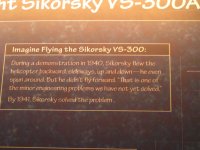The thrust is moving the plane forward resulting in the conveyor moving backwards at the same speed. The wheels will FREELY spin at 2x the speed of either the conveyor or the plane. The thrust has to move the plane forward in response to the rearward thrust. What becomes of the thrust energy in your scenario? The plane moves forward with the gear wheels going double time.dillo99 said:New Toy,
I understand what you are saying and I agree that if the plane moves, it takes off. In your scenario it moves. But to quote the original question:
"a plane is standing on a movable runway( something like a conveyor).as the plane moves the conveyor moves but in the opposite direction.the conveyor has a system that tracks the speed of the plane and matches it exactly in the opposite direction."
I interpret this to mean that the magic conveyor is propelling the plane backwards at an identical rate to its forward movement. So yes, your thrust is moving the plane forward but the "thrust" of the conveyor is exactly countering that. Again, this is just like the plane sitting there with brakes on.
Now take the winch example and apply it to a plane with its brakes on - what happens? Either the cable breaks or the winch burns out or the wheels slide on the ground. It is different from propeller thrust - the propeller can apply thrust when the wheels are braked and nothing may happen. So adding a winch or other mechanical pull to this scenario negates the whole thing.
John
